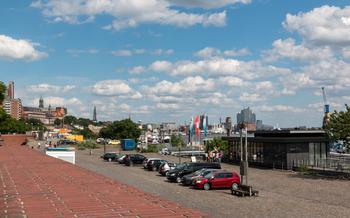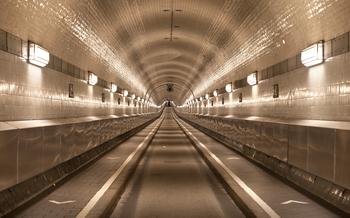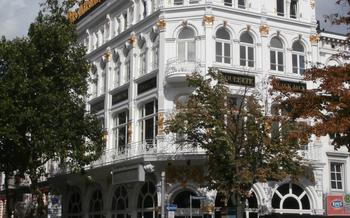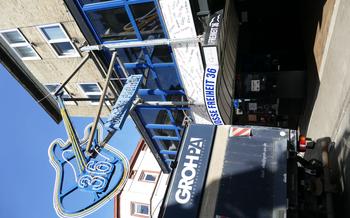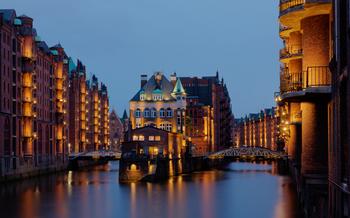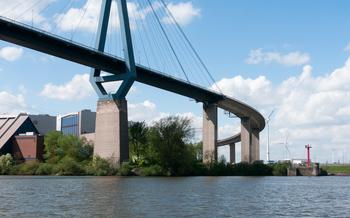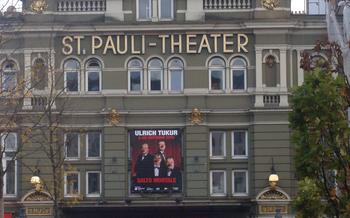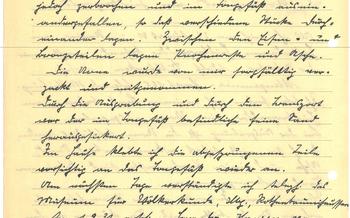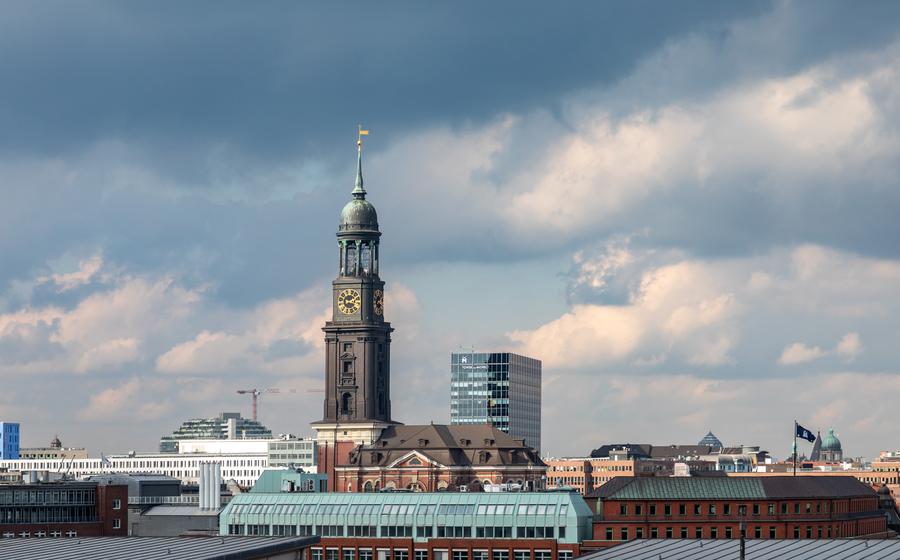
St. Michael's Church
- St. Michael's Church in Hamburg: A Majestic Landmark
- Ascending the Tower for Panoramic City Views
- Exploring the Church's Interior: A Treasure Trove of Art
- Attending a Service or Concert at St. Michael's
- Learning about the Great Fire and St. Michael's Survival
- Unveiling the Crypt and its Secrets
- Exploring the Surrounding Area: A Historic Neighborhood
- Tips for Photography Enthusiasts
- Visiting during Special Events and Festivals
- Accessibility and Facilities for Visitors
- Historical Significance of the Churchyard
- Legends and Folklore Surrounding St. Michael's
- Artistic Depictions and Cultural References
- Contribution to Hamburg's Tourism Industry
- Insider Tip: Discovering Hidden Details
St. Michael's Church in Hamburg: A Majestic Landmark
A majestic symbol of resilience and grandeur, St. Michael's Church stands as a testament to Hamburg's rich history and cultural heritage. Founded in the 17th century, this Baroque masterpiece has witnessed countless transformations of the city, serving as a beacon of hope and inspiration through trials and triumphs. Its distinctive copper spire, reaching towards the heavens, has become an iconic landmark, defining Hamburg's skyline and captivating visitors from afar.
Architecturally, St. Michael's Church is a masterpiece of Baroque opulence, blending intricate carvings, soaring columns, and ornate embellishments. The grand façade, adorned with sculptures and reliefs, narrates biblical tales and pays homage to Hamburg's maritime heritage. The church's interior is equally breathtaking, showcasing an awe-inspiring vaulted ceiling, adorned with exquisite frescoes and intricate stucco work. The stunning altar, intricately carved from marble and alabaster, is a testament to the artisanship and devotion of its creators.
Beyond its architectural beauty, St. Michael's Church holds profound significance for the people of Hamburg. It has served as a spiritual sanctuary, a gathering place for worship, and a symbol of unity throughout the city's history. The church's bells, pealing melodiously across Hamburg, have marked special occasions, guided lost souls, and instilled a sense of belonging among its citizens. St. Michael's Church stands as a poignant reminder of Hamburg's unwavering spirit, a sacred space where history, faith, and community intertwine.
Ascending the Tower for Panoramic City Views
St. Michael's Church boasts a towering steeple that offers breathtaking panoramic vistas of Hamburg. The tower stands at an impressive height of 132 meters, making it one of the tallest structures in the city. Visitors can ascend the tower's 453 steps to reach the observation deck, where they are rewarded with unparalleled views of Hamburg's cityscape, the Elbe River, and the surrounding countryside.
From the observation deck, visitors can marvel at the intricate details of the church's architecture, including the copper-clad spire and the ornate carvings adorning the tower's exterior. The sweeping views encompass iconic landmarks such as the Hamburg Rathaus, the Elbphilharmonie concert hall, and the HafenCity district, allowing visitors to gain a comprehensive perspective of the city's layout and landmarks.
The experience of climbing the tower's steps is an adventure in itself. The narrow spiral staircase winds its way up through the tower, providing glimpses of the church's interior along the way. The effort required to reach the top is well worth the reward, as visitors emerge onto the observation deck to be greeted by a breathtaking panorama that stretches for miles in every direction.
Exploring the Church's Interior: A Treasure Trove of Art
Beyond its architectural grandeur, St. Michael's Church is home to a wealth of artistic treasures that captivate visitors. The church's interior is adorned with exquisite stained glass windows, intricate carvings, and magnificent altarpieces that tell stories of faith, history, and craftsmanship.
The stained glass windows, meticulously crafted by skilled artisans, depict biblical scenes, saints, and celestial motifs. Each window narrates a unique tale, inviting viewers to contemplate their profound symbolism and beauty. The intricate carvings that adorn the walls and pillars showcase the exceptional artistry of the church's builders. These carvings depict angels, cherubs, and biblical figures, adding depth and texture to the church's interior.
The magnificent altar, a focal point of the church, is an awe-inspiring work of art. Its intricate carvings, delicate ornaments, and gold leaf embellishments create a sense of grandeur and reverence. The pulpit, adorned with intricate carvings and sculptures, stands as a testament to the church's commitment to delivering powerful sermons and teachings.
In addition to these prominent features, St. Michael's Church houses a collection of historical artifacts and relics that provide a glimpse into the church's rich history. These artifacts, carefully preserved and displayed, offer visitors a tangible connection to the past and deepen their understanding of the church's significance.
Attending a Service or Concert at St. Michael's
St. Michael's Church offers a unique opportunity to experience the spiritual and musical heritage of Hamburg. Regular services are held throughout the week, providing visitors with a chance to witness the grandeur of the church's interior while participating in a meaningful religious ceremony. The schedule of services and events is available on the church's website, allowing visitors to plan their visit accordingly.
Attending a service at St. Michael's is a truly immersive experience. The acoustics and sound quality of the church are exceptional, making it an ideal venue for concerts and musical performances. The magnificent organ, with its intricate carvings and powerful sound, adds to the awe-inspiring atmosphere of the church. Whether visitors are attending a traditional church service or a special concert, they are sure to be captivated by the beauty of the surroundings and the uplifting music that fills the air.
The dress code for attending services is typically formal, with visitors expected to dress respectfully. However, visitors should not feel restricted by this, as the focus is on creating a welcoming and inclusive environment for all. Etiquette dictates that visitors should be respectful of the ongoing service and refrain from talking or making unnecessary noise. By observing these simple guidelines, visitors can fully immerse themselves in the spiritual and cultural significance of St. Michael's Church.
Learning about the Great Fire and St. Michael's Survival
In 1842, tragedy struck Hamburg when a devastating fire engulfed the city, leaving behind a trail of destruction. However, amidst the ashes, one structure remained miraculously unscathed – St. Michael's Church. This extraordinary event cemented the church's status as a symbol of hope and resilience for the people of Hamburg.
The fire, which started in a nearby warehouse, quickly spread throughout the city, fueled by strong winds. Entire neighborhoods were reduced to rubble, including the historic heart of Hamburg. But amidst the chaos, St. Michael's Church stood tall, its towering spire piercing the smoke-filled sky.
While the exact reason for its survival remains shrouded in mystery, many attribute it to divine intervention. Some believe that the church's solid construction and its location on higher ground played a role in its salvation. Others point to the efforts of firefighters who risked their lives to protect the building.
Regardless of the explanation, St. Michael's Church emerged from the ashes as a symbol of hope and resilience for the people of Hamburg. Its survival was seen as a sign that the city would rise again from the devastation. To this day, the church remains a reminder of Hamburg's indomitable spirit and its ability to overcome adversity.
Unveiling the Crypt and its Secrets
Beneath the grandeur of St. Michael's Church lies a hidden realm—a crypt that holds the secrets of Hamburg's past. Accessible through guided tours, this subterranean chamber reveals the final resting places of prominent figures who shaped the city's history. Among them lies Admiral Horatio Nelson, whose heroic naval exploits earned him a place of honor within these sacred walls.
The crypt's atmosphere is both solemn and captivating, with dimly lit corridors leading to individual burial chambers. Elaborate sarcophagi and ornate memorials adorn the walls, each telling a tale of a life well-lived. Visitors can learn about the fascinating stories of these individuals, their contributions to Hamburg, and the legacies they left behind.
Beyond its historical significance, the crypt offers a glimpse into the city's resilience. During World War II, when Hamburg faced relentless air raids, the crypt provided shelter and refuge to those seeking solace and safety. Its sturdy construction and strategic location beneath the church helped preserve the remains of the departed and served as a reminder of the indomitable spirit of the city.
Exploring the crypt is an experience that transcends the boundaries of time, connecting visitors to the lives and legacies of those who came before them. It is a place where history whispers from the shadows, revealing the hidden depths of St. Michael's Church and the city of Hamburg itself.
Exploring the Surrounding Area: A Historic Neighborhood
St. Michael's Church is situated in the heart of Hamburg's vibrant and historic Neustadt district. The surrounding area offers a treasure trove of cultural and historical attractions, making it an ideal starting point for exploring the city.
Just a short walk from the church, you can immerse yourself in the lively atmosphere of the St. Pauli district, renowned for its vibrant nightlife, energetic bars, and world-famous Reeperbahn. This iconic street is a must-visit for those seeking a taste of Hamburg's electric nightlife.
In the vicinity of St. Michael's, you'll find a myriad of historical buildings and landmarks, testament to the city's rich past. The historic Krameramtswohnungen, a row of picturesque 17th-century merchant houses, offers a glimpse into Hamburg's trading heritage. The nearby St. Pauli Theater, with its grand facade, has been a cultural hub for over a century, showcasing a diverse range of performances.
The surrounding neighborhood exudes a vibrant atmosphere, with a plethora of cultural attractions, trendy cafes, and charming boutiques. Take a stroll along the Große Freiheit, lined with historic music clubs and theaters, and experience the city's vibrant music scene.
Transportation options are abundant, with easy access to public transportation networks, including the U-Bahn and S-Bahn, connecting you to other parts of Hamburg. Whether you prefer exploring on foot or taking advantage of the efficient public transport system, navigating the area is a breeze.
Tips for Photography Enthusiasts
St. Michael's Church is a photographer's paradise, offering endless opportunities to capture stunning images. With its impressive architecture, intricate details, and scenic surroundings, the church provides a wealth of subjects to explore through the lens.
For the best angles, position yourself directly in front of the church to capture its full grandeur. Utilize the surrounding streets and bridges to create interesting perspectives, such as shooting from below to emphasize the church's height. For interior shots, focus on the intricate stained glass windows, carvings, and sculptures that adorn the walls and ceiling.
To take advantage of the panoramic views, head to the observation deck at the top of the tower. Here, you can capture breathtaking shots of Hamburg's skyline, including landmarks like the Rathaus and the Elbe River. Experiment with different focal lengths to capture both wide-angle vistas and close-ups of specific buildings.
When photographing the church's interior, pay attention to the lighting conditions. The best time to visit is during the morning or late afternoon when the natural light illuminates the stained glass windows, casting colorful hues throughout the church. Use a tripod to steady your camera and capture sharp images, especially in low-light conditions.
After your photoshoot, take some time to edit and enhance your images. Adjust the exposure, contrast, and colors to bring out the best in your shots. Consider using filters or editing software to add a unique touch to your photographs. Share your images online or with friends and family to showcase the beauty and majesty of St. Michael's Church.
Visiting during Special Events and Festivals
St. Michael's Church is not just a historical monument but also a vibrant venue for various special events and festivals throughout the year. During the festive season, the church transforms into a magical winter wonderland, hosting enchanting Christmas markets adorned with twinkling lights, wooden stalls, and the scent of mulled wine. The atmosphere is filled with joy, laughter, and the sounds of festive music, creating a truly unforgettable experience.
Beyond Christmas, the church also plays host to a range of cultural and musical events. From classical concerts featuring renowned musicians to contemporary performances showcasing local talent, there's something for every taste. These events not only provide an opportunity to appreciate the church's acoustics and grandeur but also offer a unique glimpse into Hamburg's vibrant cultural scene.
To make the most of your visit, plan your trip to coincide with one of these special events or festivals. The church's website and local tourism offices can provide up-to-date information on upcoming events, ensuring you don't miss out on the chance to experience St. Michael's Church in all its glory.
Accessibility and Facilities for Visitors
St. Michael's Church is dedicated to making its premises accessible and welcoming to visitors of all abilities. Individuals with disabilities can take advantage of wheelchair ramps, elevators, and designated seating areas to ensure a comfortable and inclusive experience.
Guided tours are available in multiple languages, providing in-depth insights into the church's history and significance. Additionally, visitors can enhance their visit with informative audio guides, offering a self-paced and customizable exploration.
Admission fees are reasonable and contribute to the preservation and maintenance of this architectural marvel. Ticketing counters are conveniently located, and online booking options are available for added convenience. Restrooms and a well-stocked souvenir shop are also available on-site to cater to visitors' needs.
Historical Significance of the Churchyard
St. Michael's Churchyard holds a significant place in Hamburg's history and culture. Notable individuals from various walks of life found their final resting place here. Among them are prominent merchants, politicians, artists, and religious figures who contributed to shaping the city's identity. Each grave tells a story, offering glimpses into Hamburg's rich past.
The churchyard also witnessed historical events that left an enduring mark on the city. In the 19th century, it served as a gathering place for political rallies and protests. During World War II, it became a refuge for those seeking shelter from air raids. The bullet marks and scars left on the church's exterior serve as a poignant reminder of this tumultuous period.
Beyond its historical significance, the churchyard holds cultural and symbolic value. It is a place where the past and present intertwine, where the stories of the departed continue to resonate. The churchyard's serene atmosphere invites contemplation and reflection, making it a popular destination for locals and visitors alike.
Preservation and maintenance efforts are continuously undertaken to ensure that the churchyard remains a cherished heritage site. Regular cleaning, restoration work, and documentation help preserve the integrity of the graves and monuments. The churchyard's historical significance is recognized and protected, allowing future generations to appreciate its cultural and historical value.
Legends and Folklore Surrounding St. Michael's
St. Michael's Church has accumulated a rich tapestry of myths and legends over the centuries, captivating the imaginations of Hamburg's residents and visitors alike. One enduring tale speaks of the church's origins, claiming that it was built upon the site of a pagan temple dedicated to the god Wotan. According to legend, the archangel Michael appeared to a local bishop in a dream, instructing him to construct a Christian church on the spot to vanquish the pagan influence.
Another legend tells of a miraculous intervention by St. Michael during a fierce storm. As the tempest raged, threatening to destroy the city, the archangel appeared atop the church's spire, brandishing a flaming sword. His presence is said to have calmed the storm, saving Hamburg from devastation.
These stories and legends, passed down through generations, have become an integral part of St. Michael's identity, adding an air of mystery and enchantment to this revered landmark.
Artistic Depictions and Cultural References
St. Michael's Church has been an enduring source of inspiration for artists and writers throughout history. Its distinctive silhouette and rich history have been captured in countless paintings, sculptures, and literary works, each offering a unique perspective on this iconic landmark.
One of the most famous depictions of St. Michael's is the painting "Hamburg Harbor with St. Michael's Church" by the renowned German artist Caspar David Friedrich. This romantic masterpiece portrays the church as a symbol of resilience and hope amidst the bustling harbor, capturing its grandeur and majesty against the backdrop of the city's skyline.
The church's literary legacy is equally impressive. In his novel "Buddenbrooks," Thomas Mann weaves St. Michael's into the narrative, using it as a backdrop for key scenes and as a symbol of the changing social and cultural landscape of Hamburg.
St. Michael's has also found its way into contemporary art and popular culture. In recent years, the church has been featured in films, television shows, and even video games, showcasing its enduring appeal to a global audience.
These artistic and cultural references not only celebrate the beauty and significance of St. Michael's Church but also contribute to its ongoing legacy as a beloved symbol of Hamburg and a source of inspiration for generations to come.
Contribution to Hamburg's Tourism Industry
St. Michael's Church stands as a prominent symbol of Hamburg's rich history and cultural heritage. Its significance extends beyond its religious function, as it has become a major tourist attraction, drawing visitors from around the world. The church's unique architecture, stunning views, and historical significance make it a must-see destination for anyone exploring Hamburg.
The tourism industry in Hamburg greatly benefits from the presence of St. Michael's Church. Its iconic status attracts a steady stream of visitors, contributing to the city's economy. The church's popularity has led to the creation of jobs in the tourism sector, including tour guides, souvenir shop employees, and hospitality staff.
Furthermore, St. Michael's Church plays a crucial role in promoting Hamburg's cultural heritage. By showcasing the city's architectural prowess, religious traditions, and resilience in the face of adversity, the church serves as an ambassador for Hamburg's unique identity. Its presence helps to attract culturally inclined tourists interested in exploring the city's rich history and diverse cultural offerings.
To enhance its appeal to tourists, St. Michael's Church collaborates closely with tourism organizations and businesses in Hamburg. Joint marketing initiatives, guided tours, and special events contribute to promoting the church as a must-visit destination. This collaboration ensures that visitors have a memorable and enriching experience while exploring this architectural masterpiece.
Insider Tip: Discovering Hidden Details
St. Michael's Church holds many secrets and hidden details that are not immediately apparent to visitors. For those willing to explore beyond the usual tourist routes, there are unique perspectives and vantage points to discover. One hidden gem is a secret chamber located beneath the altar, accessible through a discreet door. This chamber houses a collection of ancient artifacts and documents that shed light on the church's rich history.
Another hidden gem is the Möglichkeit, a small room located at the top of the tower. It offers a breathtaking panoramic view of Hamburg, including hidden corners and landmarks not visible from the observation deck. To access the Möglichkeit, visitors must climb a narrow spiral staircase, but the effort is rewarded with an unforgettable experience.
For those interested in uncovering lesser-known stories, the church's archives contain a wealth of information, including records of marriages, baptisms, and burials. These documents provide insights into the lives of Hamburg's residents throughout history.
By exploring these hidden details, visitors can gain a deeper appreciation for the rich history and cultural significance of St. Michael's Church. Discovering these secrets is like uncovering hidden treasures, making the visit to this iconic landmark even more memorable.
